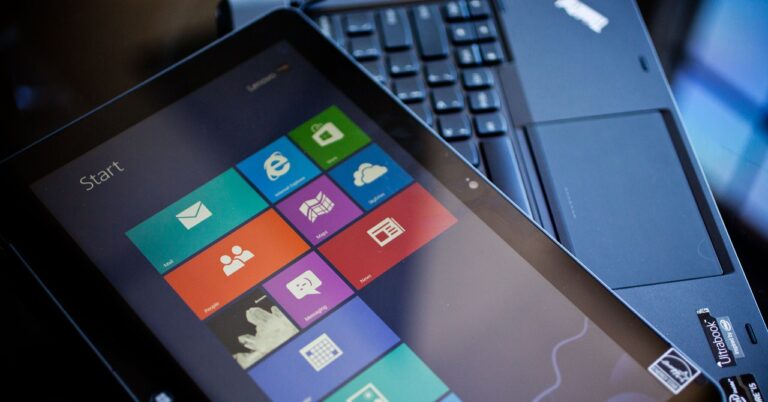
[ad_1]
Like it or not, tablets are the future. Lenovo’s latest, the ThinkPad Helix, is not likely to be a part of it. Here’s why.
Following on a string of successes with convertible PC designs – including the swell IdeaPad Yoga – Lenovo has now taken aim at the slate.
What the Helix offers in innovation it counters with a number of flaws so dazzlingly bad it’s a miracle the device ever made it out of the factory.The centerpiece of this design is a relatively standard 11.6-inch Windows 8 tablet. It weighs a respectable 1.9 pounds, features an ultra-bright, squint-inducing 1920 x 1080-pixel screen, and measures an impressive 12mm thick, one of the slimmest Windows tablets on the market. Powered by a 1.8GHz Core i5 (3rd generation), 4GB of RAM, and 128GB SSD, the specs are on the minimalist side, but they aren’t an outright disappointment. On the bottom of the tablet (if you’re holding it in landscape orientation), you’ll find all the device’s ports: One USB 2.0 port and a DisplayPort connector, plus a gaggle of connectors designed to let the Helix attach to its dock.
The docking system is how the Helix distinguishes itself from Lenovo’s other tablets, and it does give this device a few new tricks. The slate portion of the Helix snaps into a base that contains both a keyboard and a monstrous hinge that envelops the entire base of the slate. The keyboard is one of the nicest you’ll find on an 11.6-inch device, complete with a vast touchpad and even a classic ThinkPad pointing stick. You lose the scant pair of ports on the Helix when you connect to the base, but these are replicated on the back of keyboard unit. In fact, you get two USB 2.0 ports in addition to the DisplayPort connector. There’s also an extra battery in the base, so you get an additional 3 hours of running time (total: 7 hours) when it’s connected.
Using the Helix in a casual environment is fairly pleasant, both as a slate and as a laptop. The touchscreen is responsive and ultra-detailed. As with other 1080p-class touchscreens, this can make tapping accuracy very difficult, but Lenovo does include a stubby stylus to help you get around. Text at its native resolution can be difficult to read, so you’ll likely need to make good use of zoom features. Performance on general apps is fine, though an upgrade to a 4th generation Core CPU definitely seems to be in order.
The dock has one extra nifty trick to offer: The slate portion of the Helix can slide into it either forward or backward. When facing forward, you can use the Helix as a standard laptop or set it upright on a table, using the keyboard as the back leg of a stand. Flip the Helix around and you can fold the tablet down flat so it’s a slate with a keyboard underneath. This is the same trick that swivel-hinge convertible tablets offer, but the ability to detach the base altogether if you want is a clever idea.
If only that was the end of the story. What the Helix offers in innovation it counters with a number of flaws so dazzlingly bad it’s a miracle the device ever made it out of the factory.
Let’s start with looks. ThinkPad as a brand is well regarded for its clean, simple appearance, and the Helix manages to toss that out the window in one go. The base of the slate is a huge mess, and it features the most baffling design element I’ve ever seen: two little slots called “label trays.” The label trays look like SD card slots, but if you pull out the plastic inserts inside you will find, indeed, two trays with labels on them. These are bits of plastic imprinted with the legalese that normally appears on the underside of the laptop (you know: copyright warnings, the UL logo). In other words, in order to keep the back of the slate looking clean, Lenovo instead chose to build plastic, pull-out tabs into the slate upon which this text could be printed. I’m totally serious.
[ad_2]
Source link : https://www.wired.com/2013/08/lenovo-thinkpad-helix/